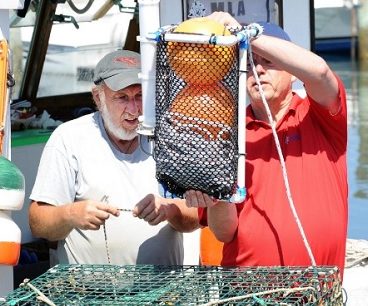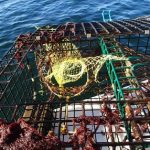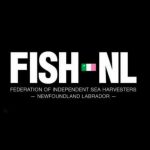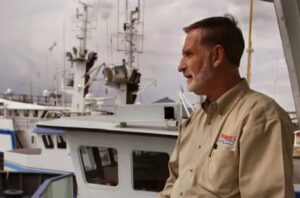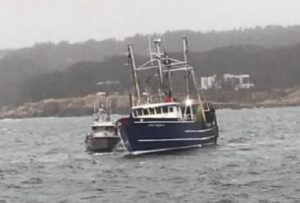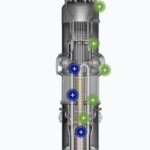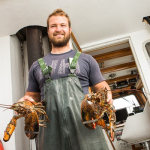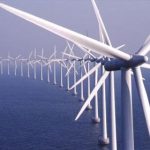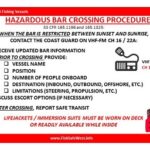Search Results for: ropeless fishing
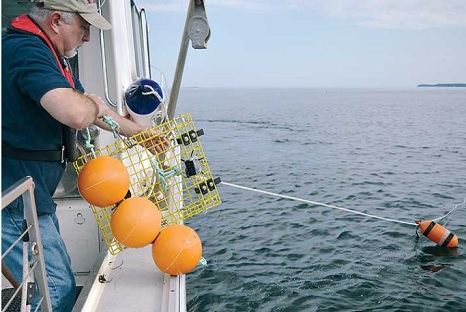
Crackpottery? A Ropeless Future for Lobster Fishing, they say!
The object thrown overboard was not in fact a trap but a ropeless fishing system deployed in a demonstration for passengers on the boat, including a film crew, a reporter and three people who study or advocate for right whales. Zack Klyver chartered the boat and arranged the demonstration. Through his consultancy, Blue Planet Strategy, he has been working as an intermediary between manufacturers, whale advocates and lobstermen, who find themselves on various sides of a regulatory survival equation as the federal government moves to protect endangered right whales. In ropeless fishing, Klyver sees a potential win for everyone involved, but getting there may take time and a fair amount of persuasion. Some funky photos, >click to read< 17:40
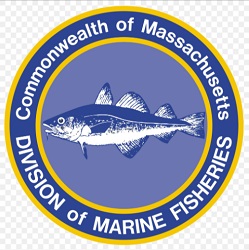
Massachusetts Launches ‘Ropeless’ Fishing Feasibility Study
The Massachusetts Division of Marine Fisheries (DMF) has launched a comprehensive scoping project to assess ‘ropeless’ fishing gear in the New England lobster fishery. A first of its kind on an accelerated timeline, the project will interview dozens of fishermen, technologists, policy experts, and scientists to fully evaluate the challenges and opportunities of the new gear type. The twelve-month project will evaluate fishing, legal, regulatory, technological challenges and opportunities of alternative lobster gear, which could reduce whale entanglements. >click to read< 12:47
Massachusetts Launches ‘Ropeless’ Fishing Feasibility Study
January 21, 2021
The twelve-month project will evaluate fishing, legal, regulatory, technological challenges and opportunities of alternative lobster gear, which could reduce whale entanglements.
The Massachusetts Division of Marine Fisheries (DMF) has launched a comprehensive scoping project to assess ‘ropeless’ fishing gear in the New England lobster fishery. A first of its kind on an accelerated timeline, the project will interview dozens of fishermen, technologists, policy experts, and scientists to fully evaluate the challenges and opportunities of the new gear type. The project is funded in part by the National Fish and Wildlife Foundation in partnership with the National Oceanic and Atmospheric Administration (NOAA), the federal agency that manages our nation’s fisheries in federal waters.
‘Ropeless’ gear is a type of fishing gear that uses high-tech alternatives to the traditional buoy line equipment used in lobster, crab , and fish pots, and some groundfish fisheries. Most types of ropeless gear are designed to prevent entanglements with marine mammals including North Atlantic right whales using submerged buoys activated by time-release mechanisms or signals transmitted from the surface. While the body of prior research on ropeless gear has focused on the mitigation of risk to endangered marine life, there is still much to learn about the technological, legal, and regulatory ecosystems of ropeless gear as well as operational and economic unknowns for the region’s fishermen and coastal communities. DMF’s project will build our knowledge on each of these issues and produce a set of recommendations for future policy development and possible implementation.
“Ropeless gear represents a sea change for the fishermen who would use it or interact with it on the fishing grounds,” said Daniel McKiernan, director of the Massachusetts Division of Marine Fisheries. “As with any proposed experimental fishing gear type, ropeless gear warrants a thorough analysis, and the urgency of this important conservation and economic issue is motivating our agency to act quickly. Our project will close the loop on the subject by analyzing previously unaddressed opportunities, challenges, and requirements for the use of ropeless fishing gear, while taking the feedback of fishermen, conservationists, and all stakeholders seriously. This project puts the Commonwealth of Massachusetts in a central leadership role advancing marine mammal conservation and fisheries management in an intelligent, equitable, and collaborative manner.”
For more details about this project please click here or send an email to [email protected].

California crab fisherman are concerned the so-called ‘ropeless’ fishing gear, is not the answer
Is the so-called “ropeless” fishing gear the silver bullet for solving the perceived problem of marine mammal interactions in California’s crab fisheries. Several profit-driven environmental groups, including Oceana would like the public and the California Department of Fish and Wildlife (CDFW) to believe these baseless claims. That’s because these groups are ramping up efforts to force California’s historic and economically most important fishery – which helps create millions of dollars annually for working families – to adopt expensive, impractical and unworkable new fishing gear, which would force most crab fishermen out of business. By Johnny Atkinson >click to read< 15:33
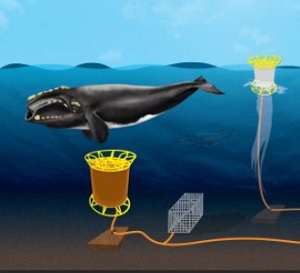
Everything you’ve heard about ‘ropeless’ fishing gear is false.
Is so-called “ropeless” fishing gear the magic bullet for the perceived problem of marine mammal interactions in California’s crab fisheries? (what about the New England lobster fishery?) Several profit-driven environmental groups, including Oceana, would like the public and the California Department of Fish and Wildlife (CDFW) to believe it is.,,, In truth, there have only been four mortalities attributed to CA commercial Dungeness crab gear since 2013, and none during the last two seasons.,,, Maine’s lobster fishery has never had a documented serious injury or mortality for any Right whale, and no entanglement since 2002, which makes this a non-problem. One of the problems with “ropeless” gear is that it’s a misleading term used by the profit-driven environmental groups to make it seem harmless. >click to read< 15:06
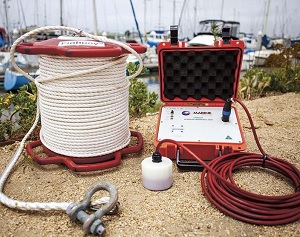
Ropeless gear is not the silver bullet – New technology promises to save the whales by reducing the need for crab fishing lines.
“We are working with fishermen to see what works and what doesn’t and what allows the fisherman to survive economically,” says Geoff Shester, a Monterey-based scientist with nonprofit Ocean. In June, the Ocean Protection Council awarded $500,000 for the testing of pop-up gear in the coming fishing season. The money will pay for five prototypes, including designs by Marina-based Desert Star Systems and Watsonville-based McFarlane Marine Services. The money will also go to fishermen participating in the research. A new crab industry group, California Coast Crab Association, is pushing back. Its president, Ben Platt, described the RAMP regulations as “an existential threat to our livelihoods”,,, >click to read< 08:39
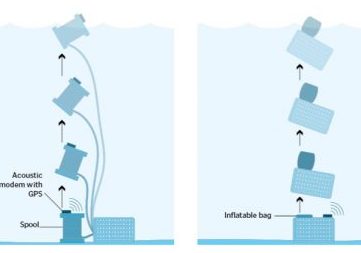
Ropeless lobster fishing? Stakeholders get a progress report
The Ropeless Consortium, a group of scientists and other interested stakeholders hosted by the Woods Hole Oceanographic Institution, met Nov. 6 to consider the prospects of ropeless fishing to reduce whale entanglements with lobster gear. “It was very cool to see how advanced the technology is and the many companies and groups working on development around the world,” Zack Klyver, lead naturalist for Bar Harbor Whale Watch, who attended the meeting, told the Mount Desert Islander. >click to read<10:30
Crab fishermen test pop-up fishing gear to reduce whale entanglements
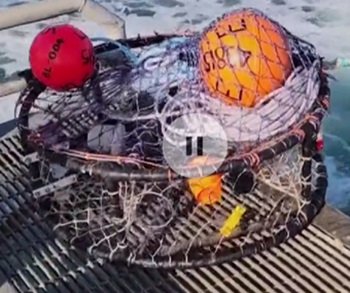 Traditionally, the Dungeness crab fishing season runs from November through June using vertical line fishing gear that spans from the surface to the seafloor. After whale entanglements spiked from 2015 to 2018, the Dungeness crab season has faced delay or closure since 2019. Season closures are affecting the fishing business, but now during this closure, a handful of commercial fishermen such as Brand Little, are testing a whale-safe kind of fishing gear, called “pop-up” or “ropeless” fishing gear, hoping the state will authorize this alternative for use next season, so fishermen can still work. Commercial fisherman Brand Little described how the first test of the spring season went with about 20 fishermen. Video, more, >>CLICK TO READ<< 08:59
Traditionally, the Dungeness crab fishing season runs from November through June using vertical line fishing gear that spans from the surface to the seafloor. After whale entanglements spiked from 2015 to 2018, the Dungeness crab season has faced delay or closure since 2019. Season closures are affecting the fishing business, but now during this closure, a handful of commercial fishermen such as Brand Little, are testing a whale-safe kind of fishing gear, called “pop-up” or “ropeless” fishing gear, hoping the state will authorize this alternative for use next season, so fishermen can still work. Commercial fisherman Brand Little described how the first test of the spring season went with about 20 fishermen. Video, more, >>CLICK TO READ<< 08:59
Maine lobstermen signal opposition to participating in ropeless testing program
 Maine lobstermen are signaling their hesitation to participate in a multimillion-dollar program the state is launching to test new ropeless technology that the federal government soon may require to protect the endangered North Atlantic right whale. Lobstermen have been largely unhappy with the regulations, fearing that the regulations will destroy the lobstering industry as they know it. Maine’s congressional delegation succeeded in securing legislative approval for a reprieve that stalls the regulations from going into effect until Jan. 1, 2029. Industry groups also have succeeded in taking NOAA to court, where the regulations are still tied up. Even so, the clock is ticking and the Department of Marine Resources wants to be prepared for what it expects is an inevitable regulation. more, >>click to read<< 06:31
Maine lobstermen are signaling their hesitation to participate in a multimillion-dollar program the state is launching to test new ropeless technology that the federal government soon may require to protect the endangered North Atlantic right whale. Lobstermen have been largely unhappy with the regulations, fearing that the regulations will destroy the lobstering industry as they know it. Maine’s congressional delegation succeeded in securing legislative approval for a reprieve that stalls the regulations from going into effect until Jan. 1, 2029. Industry groups also have succeeded in taking NOAA to court, where the regulations are still tied up. Even so, the clock is ticking and the Department of Marine Resources wants to be prepared for what it expects is an inevitable regulation. more, >>click to read<< 06:31
NFWF grants support Maine lobster industry participation in alternative fishing gear testing
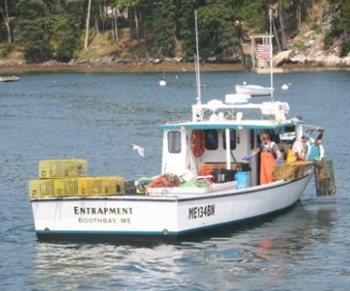 “Alternative gear, also known as “on demand” gear is a long way from being viable for fishermen or for whales,” said DMR Commissioner Patrick Keliher. “It is my goal to make sure we know what gear works, and more importantly what doesn’t work, so when future draft federal regulations come forward, we can draw on the real-world experience of fishermen when determining what the next steps should be.” One award of $1,999,992 will support the evaluation of acoustic geolocation systems that locate gear on the bottom without the benefit of surface buoys which are part of traditional gear configurations. Regional partners will include the Island Institute, Maine Center for Coastal Fisheries, Maine Coast Fishermen’s Association, the Sunrise County Economic Council, and the Gulf of Maine Lobster Foundation. more, >>click to read<< 06:09
“Alternative gear, also known as “on demand” gear is a long way from being viable for fishermen or for whales,” said DMR Commissioner Patrick Keliher. “It is my goal to make sure we know what gear works, and more importantly what doesn’t work, so when future draft federal regulations come forward, we can draw on the real-world experience of fishermen when determining what the next steps should be.” One award of $1,999,992 will support the evaluation of acoustic geolocation systems that locate gear on the bottom without the benefit of surface buoys which are part of traditional gear configurations. Regional partners will include the Island Institute, Maine Center for Coastal Fisheries, Maine Coast Fishermen’s Association, the Sunrise County Economic Council, and the Gulf of Maine Lobster Foundation. more, >>click to read<< 06:09

Mass DMF’s On-Demand Fishing Gear Economic Modeling Report Released
The Massachusetts Division of Marine Fisheries (DMF) has completed the second phase of a two-year project, funded by the National Fish and Wildlife Foundation in partnership with the National Oceanic and Atmospheric Administration, to develop the first-of-its-kind evaluation of the operational costs of on-demand fishing gear technology by Massachusetts lobster fishermen. On-demand fishing gear, commonly known as ropeless fishing gear, replaces traditional vertical buoy lines, which can result in entanglements with marine mammals including North Atlantic right whales, with new gear retrieval and marking methods. Most on-demand fishing gear systems consist of submerged buoyancy devices that are activated using time-release mechanisms or acoustic signals transmitted from the surface. Click the links inside for the report. >click to read< 15:47
Mass DMF’s On-Demand Fishing Gear Economic Modeling Report Released
 DMF’s On-Demand Fishing Gear Economic Modeling Report Released
DMF’s On-Demand Fishing Gear Economic Modeling Report Released
The second phase of a multi-year project evaluating the operational, technological, legal/regulatory, and socioeconomic challenges and opportunities of alternative lobster gear is complete.
The Massachusetts Division of Marine Fisheries (DMF) has completed the second phase of a two-year project, funded by the National Fish and Wildlife Foundation in partnership with the National Oceanic and Atmospheric Administration, to develop the first-of-its-kind evaluation of the operational costs of on-demand fishing gear technology by Massachusetts lobster fishermen.
On-demand fishing gear, commonly known as ropeless fishing gear, replaces traditional vertical buoy lines, which can result in entanglements with marine mammals including North Atlantic right whales, with new gear retrieval and marking methods. Most on-demand fishing gear systems consist of submerged buoyancy devices that are activated using time-release mechanisms or acoustic signals transmitted from the surface.
Previous economic studies focusing on on-demand gear have assessed the costs of purchasing the equipment, determining that outfitting the Massachusetts fishing fleet with the gear could cost tens to hundreds of millions of dollars. In our new report, Estimating the Costs of Using On-Demand Gear in Massachusetts Lobster Fisheries, we took a deep dive into the financial impacts of using the gear onboard lobster fishing vessels. The report, authored by DMF contractor Noah Oppenheim of Homarus Strategies LLC, Dr. Robert Griffin of SMAST, and Dr. Andrew Goode of the University of Maine, presents a new model that can be used to estimate these operational costs, providing important information that will assist in the consideration of fishery management scenarios involving entanglement risk-reducing fishing gear.
Because some types of on-demand gear require significantly more time to operate than traditional vertical line gear, the costs of using it were shown to be as high as the purchase price of the gear itself in many cases. The study estimates that a full transition to on-demand gear in Massachusetts lobster fisheries in the second half of the last decade would have resulted in a $40 million decline in lobster fishery revenue each year, or 3.5 million fewer pounds of lobster landed. The most significant cost impacts would be felt by the smallest fishing vessels operating closest to shore.
The Healy-Driscoll Administration, Massachusetts DMF, the Massachusetts Legislature, and the US Congress have each invested significant time, energy, and resources into studying on-demand fishing gear and achieving right whale conservation targets. As additional types of on-demand gear are developed and systematically tested, our new economic model will provide valuable information to assess costs and benefits to keep our iconic lobster fisheries sustainable and prosperous.
If you would like to learn more about this project, please contact [email protected]. For more information about DMF’s on-demand gear research and other protected species conservation programs, click here.
 |
|
Massachusetts Division of Marine Fisheries (617) 626-1520 | Contact Us | Find a Location |
    |
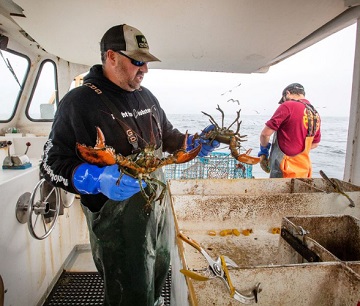
Canadian and American lobster industry confronts ‘ropeless’ traps after whale entanglements
Injuries to endangered North Atlantic Right Whales ensnared in fishing gear have fueled a prominent campaign by environmental groups to pressure the industry to adopt on-demand equipment that only suspends ropes in the water briefly before traps are pulled from the water. To address the problem, the U.S. and Canadian governments have imposed new regulation on lobster and crab fisheries in recent years, including the use of weak links in rope that break if a whale swims through, color-coded rope for tracing, adding more traps per buoy line, and zone closures during whale migration. Washington and Ottawa are now promoting ropeless fishing as a possible long-term solution. But lobstermen, particularly in Maine where 80% of U.S. lobster is caught, are not enthusiastic. >click to read< 08:49
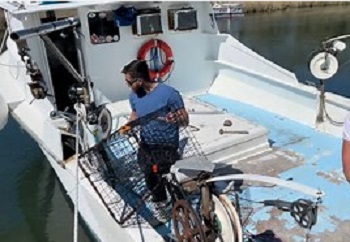
Future of right whale safe fishing gear could be in Southern waters
Getting heavy ropes out of the water column in Atlantic Coast saltwater fisheries is key to averting the extinction in our lifetimes of the North Atlantic right whale. Northeastern and Canadian lobstering and crabbing operations are deeply invested in heavy traps and the ropes used to access them, so most of the discussions about ropeless gear technology have a decidedly New England accent attached. However, red snapper hasn’t completely chased out pot fishing for black sea bass in South Atlantic waters, so fishers in this part of the world — albeit using lighter lines — are also in the conversation. >click to read< 19:25
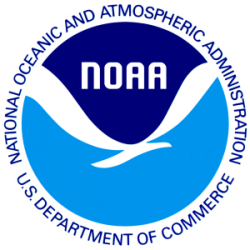
New Proposed Vessel Speed Regulations and New Draft Ropeless Gear Roadmap to Boost Protection of North Atlantic Right Whales
Today, NOAA Fisheries announced two important steps in a series of actions the agency is taking to protect and conserve North Atlantic right whales. We announced proposed changes to federal vessel speed regulations to further reduce the likelihood of right whale deaths and serious injuries that result from collisions with vessels. We also announced a new draft Ropeless Roadmap: A Strategy to Develop On-Demand Fishing. Both of these efforts are part of our North Atlantic Right Whale Road to Recovery, a strategy that encapsulates all of our ongoing work across the agency and in collaboration with our partners and stakeholders to conserve and rebuild the North Atlantic right whale population. >click to read< 11:03
New Proposed Vessel Speed Regulations and New Draft Ropeless Gear Roadmap to Boost Protection of North Atlantic Right Whales
|
Today, NOAA Fisheries announced two important steps in a series of actions the agency is taking to protect and conserve North Atlantic right whales. We announced proposed changes to federal vessel speed regulations to further reduce the likelihood of right whale deaths and serious injuries that result from collisions with vessels. We also announced a new draft Ropeless Roadmap: A Strategy to Develop On-Demand Fishing. Both of these efforts are part of our North Atlantic Right Whale Road to Recovery, a strategy that encapsulates all of our ongoing work across the agency and in collaboration with our partners and stakeholders to conserve and rebuild the North Atlantic right whale population. Proposed Changes to the North Atlantic Right Whale Vessel Strike Reduction RuleThe proposed changes to the North Atlantic Right Whale Vessel Strike Reduction Rule will further protect the whales from death and serious injuries resulting from collisions. The changes expand the current mandatory seasonal speed restrictions of 10 knots or less in designated ocean areas and now include most vessels measuring 35 to 65 feet in length. They also broaden the spatial boundaries and timing of the seasonal speed restriction areas along the East Coast of the U.S. The agency will conduct three informational webinars on these proposed changes. The specifics for those webinars are available online. Draft Ropeless Roadmap: A Strategy to Develop On-Demand FishingOur draft Ropeless Roadmap describes the current state of on-demand, or “ropeless,” fishing and outlines a path for increasing adoption of this technology in commercial fisheries in the Northwest Atlantic Ocean. The report is available online for public review and input. The agency plans to collect input at existing meetings and through an online feedback form. The North Atlantic right whale is one of the world’s most endangered large whale species. The latest preliminary estimates suggest there are fewer than 350 remaining, with less than 100 reproductively active females. NOAA Fisheries and our partners are dedicated to conserving and rebuilding the North Atlantic right whale population through a variety of innovative techniques to study, protect, and recover the endangered whales. For more information on either of these actions, please visit our website. |
Questions?Vessel Strike Reduction Rule: Lauren Gaches, NOAA Fisheries Public Affairs, 202-740-8314 Ropeless Roadmap: Teri Frady, Northeast Fisheries Science Center, 508-495-2239 |

New England lobster, crab boats could begin using experimental ropeless gear with federal permits
Henry Milliken supervises a prototyping program for the so-called “ropeless” gear at the Northeast Marine Fisheries Science Center in Woods Hole. “Our goal is to work with the fishermen, get them experienced with the gear outside of the closed areas, outside of the times when the right whales are present, and then when everyone is experienced, everyone is comfortable, then permit them to fish in the closed areas,” Milliken says. Most Maine fishermen dismiss the technology as unworkable in the state’s diverse fishing grounds. But a handful are quietly trying it out. >click to read< 19:36

Massachusetts state regulators reject plan to use ropeless lobster traps
The proposal, submitted by a group of lobstermen organized under the name “Pioneers for a Thoughtful Coexistence,” asked regulators to allow them to set as many as 200 ropeless traps in areas along the South Shore, where lobster fishing is closed three months a year. DMF Director Daniel McKiernan denied the plan and laid out three reasons for his decision, the first being that the proposal “lacks a study design that will contribute meaningfully to further understanding the efficacy of ropeless fishing.” >click to read< 08:02

Rebuttal: Ropeless lobstering is not the answer
I grew up in a lobster fishing family and I think I know a thing or two about how to live, thrive, and survive on the water. So, I was surprised to read a recent column, (“Ropeless Technology Ahead of the Wave,” March 2) authored by a “wild mushroom entrepreneur” who seems to think she actually knows best when it comes to the future of the lobster industry. It is accurate to say the Maine lobster industry faces an uncertain future, but not because of the endangered North Atlantic right whale. The real threat comes from Washington, DC,,, >click to read< By John Leonard 09:51

South Atlantic: NMFS accepting input on “ropeless” black sea bass pots
The National Marine Fisheries Service is accepting comments on an application for an exempted fishing permit from Sustainable Seas Technology Inc. The applicant proposes deploying modified black sea bass pots with acoustic subsea buoy retrieval systems in federal waters off North Carolina, South Carolina, Georgia and northeastern Florida. Adaptation of “ropeless” systems for this style of pot fishing could reduce risk to these whales and other marine animals that suffer entanglements, according to the applicant. >click to read< 09:56 fixed gear
THE FUTURE OF FISHING IS INNOVATION by Zack Klyver
Maine’s lobstermen begin 2022 with a unique opportunity to fundamentally solve the whale entanglement issue. Throughout history technology has been used to improve our lives and solve complex problems. Invention has brought us cell phones, computers, satellites, and soon, self-driving cars and a base on the moon.
Technology can end the mortality of whales in the lobster fishery and simultaneously make the fishery more efficient, safer, and reduce gear conflict and gear loss. NOAA has granted the lobster fishery a ten- year time frame to substantially reduce risk to critically endangered right whales. Instead of spending millions on trying to litigate their way out of this, fishermen can innovate their way out of this.
For example, The Maine Center for Coastal Fisheries in Stonington is working through their skipper’s program to experiment with underwater “reflectors” on traps – permitting them to be located quickly on depth sounders. In unison, they are developing a list of “best practices for grappling up gear”, with the hope that these innovations would allow fishing without fishing lines in the new Maine closure.
In 2020, we tested “ropeless” gear systems produced by Edgetech and SMELTS, in the waters of Frenchman’s Bay and Mount Desert Rock. Ropeless fishing is a new technology that removes the buoys and end lines that entangle whales and replaces them with an acoustic release that when triggered brings up a stowed line and buoy or fills an airbag. During nine days of testing, we conducted over 60 deployments and had nearly 100% success in retrieval.
This year we established a ropless testing program with eight Maine lobster and gillnet fishermen, in partnership with the Northeast Fisheries Science Center and gear manufacturers. These pioneering fishermen are testing ropeless from Eastport to Kennebunkport, in 28-foot tides and 35 miles offshore, and are proving that these systems work in Maine.
Teledyne, a giant high-tech company who recently purchased FLIR and Ray Marine for $8 billion are one of over a dozen groups globally that are designing and engineering advanced ropeless and tracking systems. These groups are producing hull mounted acoustic transducers, smart buoys, sub-sea gear marking, and working to seamlessly integrate all this into fishermen’s chart plotters.
Society is willing to pay for this conversion because society wants fishermen and whales to co-exist. The greatest risk for whales has been 10 miles and more offshore so we should focus on federal license holders that make up 25% of the Maine fleet. Fishermen offshore use strings of traps with two end-lines and two buoys. We could remove one vertical line and replace it with a ropeless system and immediately get a 50% entanglement risk reduction.
In Canada, the Acadian Snow Crab fishermen are on the verge of going fully ropeless. This winter Massachusetts fishermen will be fishing ropeless in the right whale closed area. The Maine legislature could provide funding for innovation and testing. If we roll up oursleeves and work together, we can solve this conundrum and enhance Maine’s lobster fishery for generations to come.
Zack Klyver is the Science Director for Blue Planet Strategies and based in Bar Harbor. He grew up in a Maine fishing family and worked as a whale watch naturalist for 30 years.

Held Hostage For Ropeless? Reject the Pew Petition for 3 lobster area closures that protect no Right Whale!
Maine Delegation Calls on Commerce Secretary to Reject Petition for Seasonal and Dynamic Closures in Parts of Maine’s Lobster Fishery – Maine’s congressional delegation today pressed Commerce Secretary Gina Raimondo to reject a petition by the Pew Charitable Trusts to impose seasonal and dynamic closures on parts of Maine’s lobster fishery. The lawmakers’ objections centered on the limited effects the closures would have on protecting right whales at significant economic cost on lobstering communities up and down the state’s coast. The rulemaking proposed in the petition would close three different areas of Lobster Management Area 1 to vertical line trap fishing. Pew proposed opening those areas to ropeless fishing, ignoring the reality that ropeless technology is not commercially available, financially viable for lobstermen, or proven safe and effective. >click to read<. Read a copy of the letter here.
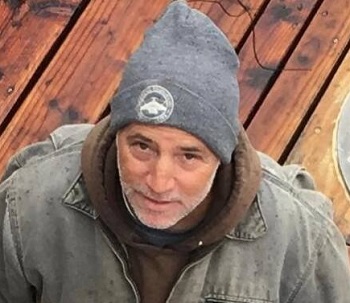
‘Ropeless’ Crab Gear Would Put Whales At Greater Risk
Advocates for proposed crab gear legislation in California, AB 534, often cite misleading information in support of policies that would destroy California’s iconic and sustainable trap fisheries, while doing nothing to protect whales. The main argument is that existing crab gear is responsible for most whale mortality off the California coast, and that “ropeless” or “pop-up” gear would reduce the risk to whales from fishing gear. But the reality is that commercial fishermen share the goal of minimizing interaction between marine mammals and fishing. >click to read< By Ben Platt 17:44

California Crab Groups Oppose Legislation Requiring ‘Ropeless’ Gear
The crabbing season has been repeatedly delayed by state agencies citing concerns about whale sightings,,, The most recent industry challenge comes in the form of proposed legislation which would require crabbers and many other fishermen to use “ropeless” traps by the end of 2025 in order to avoid killing or harming sea creatures which can become snared in lines stretching from a trap at the sea-floor to a buoy at the surface. In a recent press release, Ben Platt, president of the California Coast Crab Association, an industry group formed last year, says AB 534 “promotes an unproven and unviable fishing method that presents significant operational and safety risks to West Coast fisheries.” >click to read< 08:13
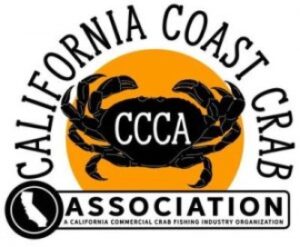
Misguided AB 534 ‘Pop-Up Crab Gear’ Will Hurt Whales, Fishing Families, Coastal Communities
Data Show Whale Populations Soaring, Virtually No Interactions with Crab Gear! Recently, Assembly Member Bonta of the California Legislature introduced a bill, AB 534 that if passed, would require faulty and failure prone ropeless fishing gear, as determined by the California Department of Fish and Wildlife (CDFW), to be used when taking any species of fish for commercial or recreational purposes when using a trap. AB 534 promotes an unproven and unviable fishing method that presents significant operational and safety risks to West Coast fisheries and that will result in more harm to marine life. The bill is an end-run around existing state and federal regulatory >click to read< 13:32
 Bill 534 could eliminate whale entanglements, hurt (destroy) the crab fishery – 03/4/2021, Authored by Rob Bonta-D California, in collaboration with Social Compassion in Legislation and the Center for Biological Diversity, Assembly Bill 534 argues that crabbers use antiquated trapping gear >click to read<
Bill 534 could eliminate whale entanglements, hurt (destroy) the crab fishery – 03/4/2021, Authored by Rob Bonta-D California, in collaboration with Social Compassion in Legislation and the Center for Biological Diversity, Assembly Bill 534 argues that crabbers use antiquated trapping gear >click to read<
Misguided AB 534 ‘Pop-Up Crab Gear’ Will Hurt Whales, Fishing Families, Coastal Communities
For Immediate Release March 30, 2021
Misguided AB 534 ‘Pop-Up Crab Gear’ Will Hurt Whales, Fishing Families, Coastal Communities
Data Show Whale Populations Soaring, Virtually No Interactions with Crab Gear Crescent City, CA – Recently, Assembly Member Bonta of the California Legislature introduced a bill – AB 534 – that, if passed, would require faulty and failure prone ropeless fishing gear, as determined by the California Department of Fish and Wildlife (CDFW), to be used when taking any species of fish for commercial or recreational purposes when using a trap.
That’s why a large, diverse coalition of fishery groups have mobilized in recent weeks to oppose AB 534. A letter signed by all the major fishing and seafood processing trade associations has been sent to Assembly Member Bonta and the Water and Parks Committee members who will vote on the legislation. A petition opposing the bill is being circulated widely on social media fishing pages and already has over 4,000 signatures.
AB 534 promotes an unproven and unviable fishing method that presents significant operational and safety risks to West Coast fisheries and that will result in more harm to marine life. The bill is an end-run around existing state and federal regulatory processes that are already addressing fishery interactions with humpback whales,” said Ben Platt, President of the California Coast Crab Association (CCCA).
“The commercial crab industry has worked tirelessly for more than a decade to mitigate interactions between our fishery and Endangered Species Act (ESA) listed animals, including Humpback whales, Blue whales, and Leatherback turtles. These measures have reduced marine mammal interactions with fishing gear to practically zero,” continued Platt. “While the optics of extremely rare interactions with existing crab gear are upsetting, the real danger to a robust and rapidly growing whale population is the so-called ‘ropeless’ gear being proposed by AB 534.That’s because as much as 20
percent of this gear is lost or irretrievable, which litters the ocean and greatly increases, NOT decreases, the risk of entanglement for whales and turtles.”
The proposed bill is more restrictive than even the most protective marine mammal laws in the nation, the Marine Mammal Protection Act (MMPA) and the ESA. It would require the state to unnecessarily regulate commercial fishing, taking an end run around the regulatory process by mandating through statute an unworkable new technology which has zero support in the fisheries.
Humpback whales, the only ESA-listed marine mammal which has any potential co-occurrence with the crab fishery, are a robust and thriving population. The only significant non-naturally occurring mortality to whales off the CA coast is caused by large ship strikes. These cruise and cargo ships kill between 50-150 whales a year, yet the Humpback whale population is still expanding at a rate of 8-10 percent annually, according to the Cascadia Research Collective (CRC). That means 575 new animals will be added to the population just this year.
“When the Center for Biological Diversity first sued CDFW in 2018 over the interaction issue, there were thought to be 2,200 Humpback whales, but recent official revisions to the population count shows more than 7,200 migrating off the West Coast,” said Platt.
“The California Dungeness crab fishery has had zero confirmed interactions with Humpbacks in the current 2021 season, and only one confirmed interaction with a whale during the 2020 season, and that whale was released unharmed. Our fishery has zero impact on the species, and in fact, we are hopeful Humpbacks will soon be removed from the Endangered Species List.
“This is a huge success story, and in light of it, AB 534 constitutes a solution in the absence of any problem,” continued Platt. “And because the crab fishery is our most widely shared and economically important fishery, the new bill threatens the continuation of the entire West Coast commercial fishing industry. Most fishermen and seafood buyers will not be able to stay in business without a viable crab season. The long-term effects on the rural coastal communities of California, which rely heavily on the crab industry, will be devastating.”
“I’ve been buying and selling live crabs for more than a decade, including year-round delivery to many Asian restaurants and seafood markets in Assembly Member Bonta’s own district, and I can tell you his bill will make it extremely challenging for all of us to survive economically,” said George Lay, owner of Ocean King Fish. “The Asian community is all about traditions, especially live Dungeness crab; it’s at every family gathering. AB 534 will price live crab out of reach for a lot of families, essentially killing this tradition and many businesses in the process.”
Further, the cost for the three ropeless gear types being most aggressively pushed range between $720 and $2,500 per device. This means that a permit owner with a 500-trap tier allotment must spend between $360,000 and $1,255,000 to switch from the existing gear to “pop-up” gear. By comparison, a 500-trap allotment today, including all traps, lines, buoys, and bait jars, will cost between $80,000 and $125,000.
“Even the most successful crab boat owners will not be able to afford to switch to ‘pop- up’ traps,” said Pratt. “This is a total non-starter for this fishery, and crabbers are not interested in wasting time and money on a gear type that won’t work and will bankrupt them.”
For further evidence that AB 534 is unneeded – and indeed dangerous – the successful rules and practices developed over the past decade were in partnership with Director Bonham and the CDFW, Chairman Crowfoot and the Ocean Protection Council, Senator Mike McGuire and his Joint Committee in Fisheries and Aquaculture, and stakeholder groups including the Dungeness Crab Task Force, the Whale Working Group, the California Coast Crab Association and other stakeholders.
These measures include strict trap limits which "cap" the number of traps which can be deployed in the fishery; a Whale Working Group to assess risk and recommend in- season management measures to avoid interactions with the fishery; an enforceable Safe Practice Guideline for crab gear; a coastwide, enforceable Lost Gear Retrieval Program; and, most recently, a CCCA boat-based whale surveying pilot project to help reduce cost and manpower burden on CDFW, while increasing coverage of critical marine life concentration reporting to avoid co-occurrence with the fishery.
“Unfortunately, California regulators so far have not been willing to change the regulations to reflect the higher whale population numbers or push back seriously against the NGO attacks on our coastal fishing communities. The only gear type they have seriously considered is ‘pop-up’ gear, which has proven to be extremely cost prohibitive, impractical, and ineffective, and results in more risk to marine mammals, not less,” said Platt.
“There is already an existing process underway under Section 10 of the ESA to implement a Conservation Plan to protect ESA-listed species along California’s coast. That plan will also comply with the MMPA. The ESA and the MMPA are the ‘gold standard’ for the protection of marine mammals. It is not helpful—and not protective for marine mammals—for the state to have to deal with unnecessary and ill-advised distractions from completing those federal processes,” said Ryan Steen, attorney with Stoel Rives LLP who represents CCCA and specializes in the ESA and MMPA.
About the California Coast Crab Association
The CCCA is a non-profit 501(c)(6) trade organization composed of individual crab boat owners, hired captains and Dungeness crab buyers. The CCCA board of directors is made up of nine member fishermen and crab buyers with a combined 240 years of experience in the crab fishery. Our diverse membership includes the smallest operators with skiffs up to the largest crab boats on the West Coast, and our member-buyers range from small live crab peddlers to the largest distributor of seafood on the West Coast.
The CCCA was formed in May of 2019 after the disastrous out-of-court settlement agreement in CBD vs Bonham, which created new, highly restrictive, and unfair restrictions for the California Dungeness crab fishery. Dungeness crab is the most widely shared and economically important fishery to the West Coast commercial fishing industry, but the new ESA mandates created by CBD vs Bonham are threatening the viability of the fishery and the economic health of California's coastal communities.
Since formation, the CCCA has been working hard with the crab fishing industry and the CDFW to find workable solutions to meet the mutually shared goals of protecting our most valuable fishery and minimizing interaction between marine mammals and our
fishing gear. In recent years, the commercial fishing fleet has been proactive in addressing important issues by initiating legislation through our Dungeness Crab Task Force to create new rules, including tiered trap limits, a Whale Entanglement Working Group, a statewide Lost Gear Retrieval Program and Safe Practice Guidelines for fishermen. More information at www.cacoastcrabassociation.org.
Media Contacts:
Ray Young
Razor Sharp PR
916-505-4245
[email protected]
Ben Platt
President, CCCA
707-367-0385
[email protected]

Ben Platt: Whales aren’t at risk from crab fishing along California’s coast
Anyone who lives in or near California’s many historic fishing communities like Morro Bay, Monterey, or Half Moon Bay, has probably heard the term “ropeless” crab fishing gear. That’s the new buzzword for equipment being promoted by environmental groups to solve the perceived problem of whale interactions with fishing gear.,,, Both the East Coast Lobster fishery and the West Coast Dungeness crab fishery, each of which are made up of thousands of independent fishermen, have tested the pop-up “ropeless” gear and found it to be faulty. Meanwhile, strikes by large ships likely cause 50-150 whale deaths a year off the West Coast,,, >click to read< 07:31

Emergency Petition! Awaiting Court-Ordered Help, Enviro’s Want Ban on Some Lobster Traps, pushing newer ropeless traps
“We filed this petition because it is an emergency situation,” Kristen Monsell, oceans legal director at the Center for Biological Diversity,,, Monsell and colleagues brought a lawsuit against the federal government in 2018, challenging how it has managed lobster fishing and arguing for better right whale protections. In April, U.S. District Judge James Boasberg ordered the National Marine Fisheries Service to issue new regulations by the end of May of 2021. In the interim, the petitioners say it’s necessary to ban vertical lines. That could happen without banning lobster fishing outright, since newer, ropeless traps don’t pose the same risks to the whales. >click to read< 07:12
Emergency Petition Seeks to Protect Endangered North Atlantic Right Whales From Fishing Gear – >click to read<
Today, the Humane Society of the United States and Humane Society Legislative Fund, along with our coalition partners,,, >click to read<








